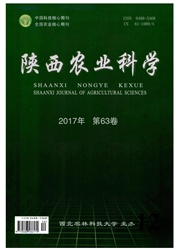

 中文摘要:
中文摘要:
采集河南省煤矿区义马、平顶山、永城大气PM10样品,使用场发射扫描电镜(FESEM)分析煤矿区PM10的微观形貌和来源.质量浓度分析结果表明,3个矿区夏季和冬季PM10的平均值在100~241μg/m^3之间,义马地区空气污染最严重.微观形貌分析结果表明:煤矿区大气PM10的类型可分为烟尘集合体、规则矿物颗粒、不规则矿物颗粒、球形颗粒及超细颗粒等几种类型,均具有不同的来源.颗粒物类型的多样性代表矿区污染的多源性和大气二次化学反应的复杂性.其中,烟尘集合体和规则矿物颗粒分别具有温室和制冷效应,二者环境效应具有相互制约的特点.有包壳的飞灰和空心飞灰是煤矿区特有的,其成因主要与燃煤作用有关.同一采样点不用季节PM10中不同颗粒数量百分比的变化不仅受冬夏两季燃煤量不同的影响,还受大气湿度、温度、风速等气象因素的影响;而不同采样点同一季节PM10中不同颗粒数量百分比不仅与气象因素有关,也受采样点附近主要污染源的影响.
 英文摘要:
英文摘要:
PM10 samples were collected in Yima,Pingdingshan and Y ongcheng m summer and winter of 2008, using the Field Emission Scanning Electron Microscopy (FESEM) to analyze the PM10 micro -morphology and origins. The PMl0average concentration in the three coal mine cities was 100 - 241 μg/m^3 during summer and winter. Yima was the dirtiest city. The analysis of PM10 micro - morphology by FESEM revealed the PM10 samples to be comprised of soot aggregates, regular and irregular mineral particles, coal fly ashes, spherical particles( coal fly ashes and secondary particles), uhrafine particles and diversity of PM10type represent the complicacy of chemical reactions. Soot aggregates and regular some other unresolved particles, which had different origins. The pollution sources in coal mine cities and the second atmospheric minerals had greenhouse and icehouse effect respectively, which environment effect had mutually-restrained characteristic. Coated and hollow fly ashes were unique in coal mine cities and mainly come from coal burning. The number percentage change of different types of particles in PM10 in the same sampling sites in different seasons was affected by different amounts of coal -burning in winter and summer, as well as by atmospheric humidity, wind speed, temperature and other meteorological factors, while the percentage number of different types particles in PM10 of different sampling sites in the same season was not only related with meteorological factors but also with the main pollutant sources near the sampling sites.
 同期刊论文项目
同期刊论文项目
 同项目期刊论文
同项目期刊论文
 期刊信息
期刊信息
